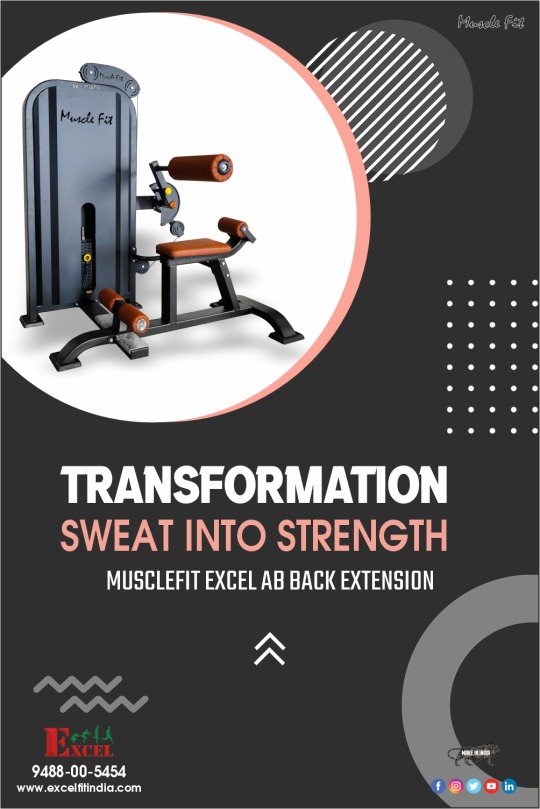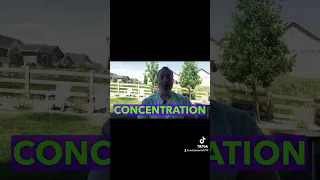#PhysicalExercise
Explore tagged Tumblr posts
Text
#fitness#exercise#physicalfitness#gym#physicalexercise#strengthtraining#bodybuilding#gymequipment#weighttraining#excelfitness
2 notes
·
View notes
Link
#balancinghealthandwellbeing#meditation#physicalexercise#readabook#reduceclutter#reduceculturalnoise#spiritualjournal
0 notes
Link
#cognitive-behavioraltechniques#cortisol#emotionalresilience#HPAaxis#mindfulness#neuroplasticity#nutrition#physicalexercise#sleep#socialsupport#stressmanagement
0 notes
Text
Abnormal movements: Not always neurological!
Yes, there are causes of abnormal movements that are not neurological in origin. Although most movement disorders are linked to problems in the brain or nervous system, certain medical conditions and external factors can also cause involuntary movements.

Examples of non-neurological causes of abnormal movements
1. Medication: Some medications can have side effects that manifest themselves as abnormal movements.
2. Metabolic conditions ⚖️: Chemical imbalances in the body can also lead to movement disorders (e.g. hyperthyroidism).
3. Psychological disorders: Stress, anxiety or conversion can lead to abnormal movements. These are known as functional or psychogenic movement disorders.
4. General medical conditions ⚕️: Certain general medical conditions, such as infections, trauma or tumors, can indirectly affect the nervous system and cause abnormal movements.
5. Toxic factors ☢️: Exposure to certain toxic substances, such as heavy metals, can also lead to movement disorders.
Further tips to improve your walking
- Exercise regularly to strengthen your muscles and improve your balance. ️♀️
- Wear comfortable, well-fitting shoes.
- Use a cane or walker if you need support.
- Take care when walking on uneven or slippery surfaces.
- If you have vision problems, make sure you wear your glasses or contact lenses.
Conclusion
It's important to see a doctor if you have trouble walking. The doctor will be able to determine the cause of your walking problems and recommend the appropriate treatment.
Go further
#AnomalousMovements#Neurology#NeurologicalDisorders#Health#Well-Being#Non-NeurologicalCauses#Medications#MetabolicConditions#PsychologicalDisorders#GeneralMedicalConditions#ToxicFactors#Diagnosis#WalkingDisorders#Parkinson'sDisease#MapleSclerosis#Stroke#Ataxia#Dystonia#Arthrosis#Diabetes#Balance#PhysicalExercise#Advice
0 notes
Text
As a car owner, have you ever been troubled by such problems: the car floor mats always shift and curl during driving, which not only affects the neatness and aesthetics of the car interior but also may jam the brake or accelerator pedal at a critical moment, posing a serious threat to driving safety. Anyway, I used to be deeply bothered by this until I discovered the [Brand Name] car floor mat fasteners, which perfectly solved this problem
.

Super Strong Adhesion, Stable as a Mountain The [Brand Name] car floor mat fasteners adopt advanced pasting technology and high-quality glue materials, and its adhesiveness is astonishing. Once the floor mat is closely attached to the fastener, no matter how frequently you step, accelerate, or brake during driving, or even when the vehicle experiences severe vibrations on bumpy roads, the floor mat can always stay in place without moving at all. I once deliberately tested it on rugged mountain roads and uneven urban roads, and the floor mat did not shift at all, which gave me full confidence in its firmness. This super-strong stability not only avoids the potential safety hazards caused by the curling and folding of the floor mat but also creates a neat and comfortable environment in the car, allowing for more focused and at-ease driving.

Convenient Installation, Easy to Adapt In addition to the excellent fixing effect, the installation process of the [Brand Name] car floor mat fasteners is also extremely simple. It does not require any complicated tools or professional skills. You only need to gently tear off the backing paper and evenly paste the fasteners on the corresponding positions on the car floor, and then align and attach the floor mat. The whole process takes less than a few minutes, and even car owners with weak hands-on abilities can easily complete it. Moreover, this fastener has wide applicability. No matter what material, shape, and size your car floor mat is, it can be perfectly adapted and closely attached, providing all-round fixing guarantee for your floor mat.

Quality Assurance, Safe and Worry-Free When choosing car accessories, we always put safety first, and the [Brand Name] car floor mat fasteners are carefully crafted based on this concept. It has undergone strict quality inspections and performance tests to ensure stable and reliable operation in various extreme environments. At the same time, the material of the fastener is non-toxic, odorless, environmentally friendly, and durable. It will not pollute the air inside the car and will not experience aging, failure, and other problems due to long-term use. Choosing the [Brand Name] car floor mat fasteners is to add a solid guarantee to the driving safety of yourself and your family, making each trip more reassuring and calm.

In short, if you are still troubled by the problem of the car floor mat running around, then the [Brand Name] car floor mat fasteners are definitely your best choice. With its super-strong adhesiveness, convenient installation method, and reliable quality, it solves the problem of floor mat fixing for you, making your driving experience safer, more comfortable, and more pleasant. Don't hesitate anymore. Hurry up and equip your car with the [Brand Name] car floor mat fasteners and start a new chapter of safe driving!


#velcro#liftweights#workout#dumbbells#barbell#benchpress#physicalexercise#basketball#tennisballs#rockclimbing#mountainbike#skateboarding#shuttlecock
0 notes
Text


🔬 Unveiling the Miraculous Effects of HIIT on Alzheimer’s Disease 🧠 --- A fascinating recent study evaluated the impact of just 8 minutes of High-Intensity Interval Training (HIIT) daily on Alzheimer's disease (AD) in a rat model, shedding light on its significant benefits for cognitive health. --- Study Overview: Objective: To assess the effects of HIIT with incremental overload on Alzheimer's disease pathology and cognitive function. --- Methodology: Forty male Wistar rats were divided into four groups: control, sham, Alzheimer's untrained, and Alzheimer's trained. Following hippocampal injections with Aβ1-42 or saline, rats underwent an 8-week HIIT protocol. Various behavioral tests, biochemical assays, and histological analyses were conducted to evaluate outcomes. --- Key Findings: Cognitive Improvements: The trained AD rats showed significant improvements in physical capacity, locomotion, learning, and memory compared to the untrained AD rats. --- Antioxidant Effects: HIIT increased the levels of antioxidant enzymes like catalase (CAT) and superoxide dismutase (SOD), and decreased lipid peroxidation, indicating enhanced oxidative stress defenses. --- Neuroprotective Pathways: Activation of the BDNF/TrkB pathway was observed, promoting neurogenesis and reducing amyloid plaques in the brain. --- Behavioral Benefits: The HIIT regimen led to notable enhancements in both locomotor activity and spatial memory, crucial for mitigating cognitive deficits associated with Alzheimer's. --- Conclusion: The study concluded that 8 minutes of HIIT daily for 8 weeks can significantly improve cognitive function, promote a positive redox balance, and activate neuroprotective pathways, effectively reducing Alzheimer’s symptoms. This underscores the potential of HIIT as a non-pharmacological intervention for enhancing brain health and combatting neurodegenerative diseases. --- Vasconcelos-Filho FSL, da Rocha-E-Silva RC, Martins JER, Godinho WDN, da Costa VV, Ribeiro JKC, da Silva CA, Ceccatto VM, Soares PM, Evangelista JSAM. Neuroprotector Effect of Daily 8-Minutes of High-Intensity Interval Training in Rat Aβ1-42 Alzheimer Disease Model. Curr Alzheimer Res. 2020;17(14):1320-1333. doi: 10.2174/1567205018666210218161856.
#HIIT#AlzheimersDisease#BrainHealth#Neuroprotection#CognitiveFunction#ExerciseScience#HealthResearch#Neuroscience#FitnessScience#ADTreatment#InnovativeTherapies#RedoxBalance#BDNF#TrkB#Neurogenesis#PhysicalExercise#AmirMohammadZobeydi
0 notes
Text
My 3 Preferred Physical Exercises
What is your favorite form of physical exercise? When it comes to physical exercise, I stand for simple ones that can be done everywhere. So, it allows all the flexibility to do them even during a busy day, that you have no time to go to the gym. Here are the exercises I prefer: – Jumping with or without a rope – Ups and downs exercise – Wall Pilates are my recent preferences as well. As we…
0 notes
Text
youtube
#HealthyWeightLoss#WeightLoss#BalancedDiet#HealthAndNutrition#HealthyLifestyle#Fitness#WellBeing#Supplements#FatBurning#Metabolism#Biolean#Nutrition#HealthyEating#BodyTransformation#PhysicalExercise#WeightLossChallenge#HealthyBody#FitnessGoal#Bolean#Bilean#Bioean#Biolan#Biolen#Biolea#BBiolean#Biiolean#Bioolean#Biollean#Bioleean#Bioleaan
1 note
·
View note
Text
Chris Powell Level 1 Beginners Workout 15 Minute Exercise Routine
source #15MinuteWorkouts #PhysicalExercise(Interest) https://jjsocialmanager.com/chris-powell-level-1-beginners-workout-15-minute-exercise-routine/
0 notes
Text
ব্যায়াম করার সঠিক পদ্ধতি
#exercisekorarsothikniyom#exercisemotivation#physicalhealth#physicalexercise#exerciseroutine#proyojonit#প্রয়োজনআইটি
1 note
·
View note
Text

Musclefit (Excel) Ab Back extensions are an effective way to strengthen the muscles in your lower back, specifically the erector spinae. This can help reduce the risk of lower back pain and improve posture.
#exercise#fitness#gym#gymequipment#physicalexercise#physicalfitness#weighttraining#strengthtraining#ababackextension#backextension#backextensionabworkout#lowerbackextension#backextensionexercise#backextensionforglutes#howtodobackextensions#backextensionsmachine#backpain#backextensionbodybuilding#backextensionforlowerback
4 notes
·
View notes
Link
#balancinghealthandwellbeing#meditation#physicalexercise#readabook#reduceclutter#reduceculturalnoise#spiritualjournal
0 notes
Text
The Mental Benefits of Physical Movement: Exercise and Brain Health
We often hear about the physical benefits of exercise—increased strength, improved flexibility, and weight management. However, at Venn Chiropractic and Wellness Center in Frisco, TX, we want to shine a light on the significant but less-talked-about mental benefits of physical movement. Exercise doesn’t just sculpt your body; it also has profound impacts on your mind. The Mind-Body…

View On WordPress
#chiropractic#chiropractor#cognitivefunction#Dr. Venn#frisco chiropractor#friscotx#healer#health#holistic medicine#massage therapy#mentalhealth#mentalresilience#physicalexercise#tx#vennchiropractic#wellness#wellnesscenterfrisco
0 notes
Text
The Benefits of Walking 🚶♂️

Discover the incredible benefits of walking in this uplifting and informative video. Join us as we explore how this simple and accessible form of exercise can positively impact your physical, mental, and emotional well-being. From improving cardiovascular health to reducing stress and boosting creativity, walking has numerous advantages that can enhance your overall quality of life. Embrace the joy of walking and experience its transformative effects on your health and happiness.
#WalkingBenefits#HealthAndWellness#PhysicalExercise#MentalHealth#EmotionalWellbeing#WalkingForHealth#FitnessMotivation#JoyOfWalking#WalkingForLife#HealthyLifestyle
0 notes
Text

🔬 High-Intensity Interval Training (HIIT) and Brain Health: Mechanisms and Benefits 🧠 --- A recently published review article titled "HIITing the brain with exercise: mechanisms, consequences and practical recommendations" in The Journal of Physiology explores the profound impact of High-Intensity Interval Training (HIIT) on brain health. This comprehensive review elucidates the underlying mechanisms and practical applications of HIIT, highlighting its potential cognitive benefits. --- Key Highlights: Neurovascular Function: HIIT significantly enhances neurovascular function by improving blood flow and nutrient delivery to the brain, which is crucial for maintaining cognitive function and overall brain health. --- Neuroprotective Factors: The training method increases the production of neuroprotective factors, such as Brain-Derived Neurotrophic Factor (BDNF). BDNF supports the growth, survival, and differentiation of neurons, playing a critical role in brain plasticity and cognitive function. --- Cognitive Benefits: Regular HIIT sessions are associated with improvements in memory, executive function, and processing speed. These cognitive enhancements are particularly beneficial for aging populations and individuals at risk of neurodegenerative diseases. --- Practical Recommendations: The review provides detailed guidelines for safely and effectively incorporating HIIT into fitness routines. It emphasizes the importance of tailoring programs to individual fitness levels and health conditions to maximize benefits and minimize risks. -- Future Research Directions: The article suggests various areas for future research to further explore the neurobiological mechanisms behind HIIT's cognitive benefits. It highlights the need to optimize training protocols for different populations to achieve the best outcomes. --- Importance of the Study: The findings underscore the potential of HIIT as a non-pharmacological intervention to enhance cognitive function and prevent cognitive decline. Incorporating HIIT into regular exercise routines can significantly contribute to brain health, making it an invaluable tool for both healthcare professionals and fitness enthusiasts. --- 1. Calverley, T.A., Ogoh, S., Marley, C.J., Steggall, M., Marchi, N., Brassard, P., Lucas, S.J.E., Cotter, J.D., Roig, M., Ainslie, P.N., Wisløff, U. and Bailey, D.M. (2020), HIITing the brain with exercise: mechanisms, consequences and practical recommendations. J Physiol, 598: 2513-2530. doi: 10.1113/JP275021. Epub 2020 Jun 1. PMID: 32347544.
#HIIT#BrainHealth#CognitiveFunction#Neuroprotection#FitnessScience#ExercisePhysiology#HealthAndWellness#Research#Neuroscience#HealthyAging#ScientificResearch#BrainFitness#PhysicalExercise#CognitiveHealth#Neuroplasticity#HealthResearch#WorkoutScience#ExerciseResearch#SportsScience#Physiology#MentalHealth#ScientificStudy#BrainTraining#neurogenesis#ResearcherLife
0 notes
Text
LOWER BAD CHOLESTEROL
Having high levels of LDL (bad) cholesterol can increase your risk of heart disease and stroke. It is important to lower your LDL cholesterol levels to promote better health and general well-being. Here are some tips to help you lower your LDL cholesterol: Eat a healthy diet: Focus on incorporating more_ fruits, vegetables, whole grains, and lean proteins into your diet.…
0 notes